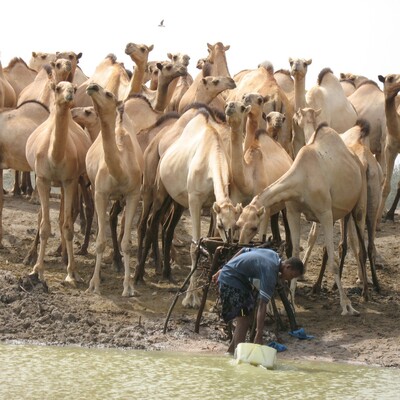
The effects of forage type (maize-lablab or oat-vetch) and level of supplementation (wheat-middlings) on food intake, diet apparent digestibility, purine excretion and milk production of crossbred (Bos taurus X Bos indicus) cows
Abstract
The paper evaluates the effects of forage type and level of concentrate supplementation on forage intake, diet apparent digestibility, purine excretion and milk production. Twelve crossbred cows (Bos taurus X Bos indicus), in early lactation were allocated to the following six dietary treatments: maize-lablab forage (ML) or oat-vetch forage (OV), offered ad libitum, and supplemented with wheat middlings. Organic matter (OM) intake was higher with cows on ML-based diets compared with those on OV based diets. The apparent digestibilities of crude protein (CP) and neutral detergent fibre (NDF) were similar for cows given ML-or OV based diets but the apparent digestibility of OM was higher for ML diets. Values of the degradation parameters of DM and NDF were greater for ML forage than for the OV forage. Forage type did not affect daily milk yield nor excretion of purine derivatives in urine used to estimate microbial-nitrogen supply. The concentration of milk fat and total solids in the milk were similar for the two forage types offered but the concentration of milk protein was slightly higher for the cows given ML-based diets. Daily OM intake increased when the amount of concentrate increased for the ML - and OV - based diets. The CP apparent digestibilities of the diets were supplemented with concentrates but there was no effect of supplementation on the apparent digestibilities of OM and NDF. The supply of microbial-nitrogen increased linearly with increaisng level of concentrate supplementation. Milk yield increased linearly when the level of concentrate supplement increased resulting in more milk. With the ML diets, when the level of concentrate increased, the milk yield increased.
Citation
Animal Production;58(pt.3): 321-328










